This is the fifth addition to my posts on slow travel in Tuscany which I never would have been able to experience without the guidance from the team at Km Zero Tours. I fell in love with the Tuscan way of life – ancient traditions, artisans and delicious farm to table food that will have you constantly calling back for more. In this article I visit the olive oil makers and taste their liquid gold. For more articles on slow travel in Tuscany see the links at the end of this post.
Olive oil, liquid gold
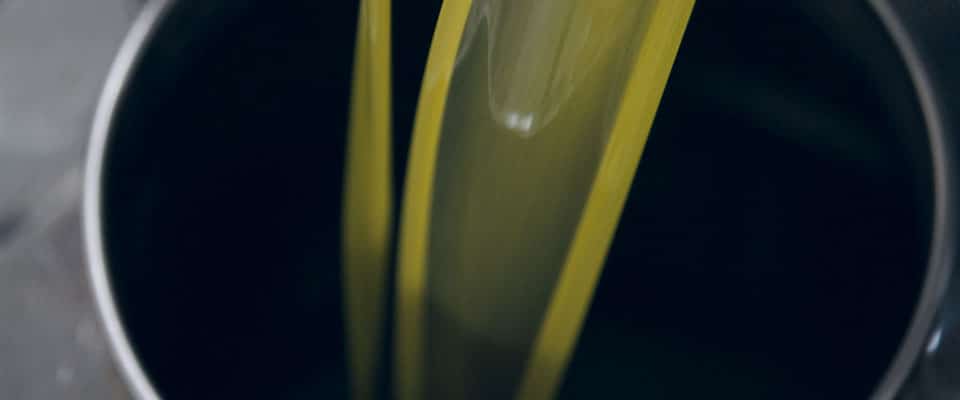
Olive oil is a precious gift that I took for granted growing up. To me, new oil was not a privilege, but something that was always on the table, something we poured generously and graciously over salads, bread with tomato and pretty much everything else.
We cooked with the regular olive oil and finished every meal with a dash of the thick extra virgin type. The olive green, thick, aromatic and incredibly characteristic smell and taste of the freshly pressed olive oil accompanied my childhood. Good bread and olive oil could make an entire meal.
As a child, I would wake up early, at my grandparents house, light the fireplace and toast some large slices of farm bread on the coals which I would then drench in copious amounts of the real extra virgin type and salt. This was one of the best things in life.
Sagittario olive oil
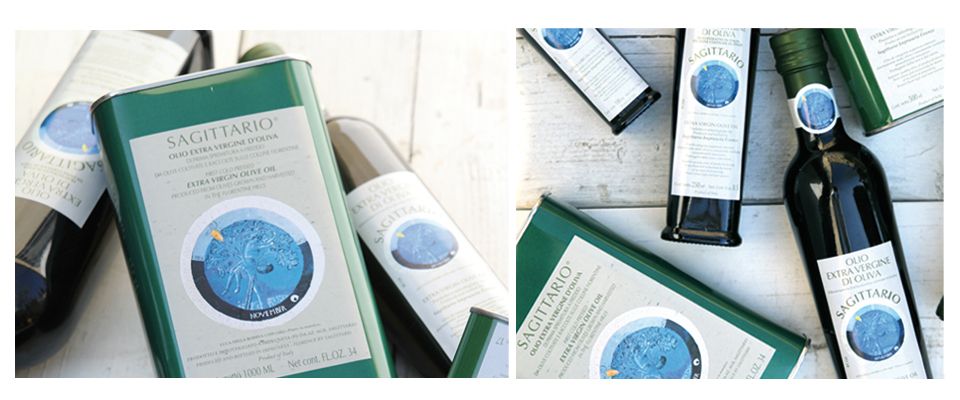
Janet left California when she was only 19 and arrived at her current 1695 country house, in the small hilltop village of Impruneta, at 21. Both her and her husband Stefano, live only fifteen minutes from Porta Romana, in Florence, but they have managed to maintain an idyllic and dream-like life in the countryside thanks to savvy business ideas and an intense love for the land.
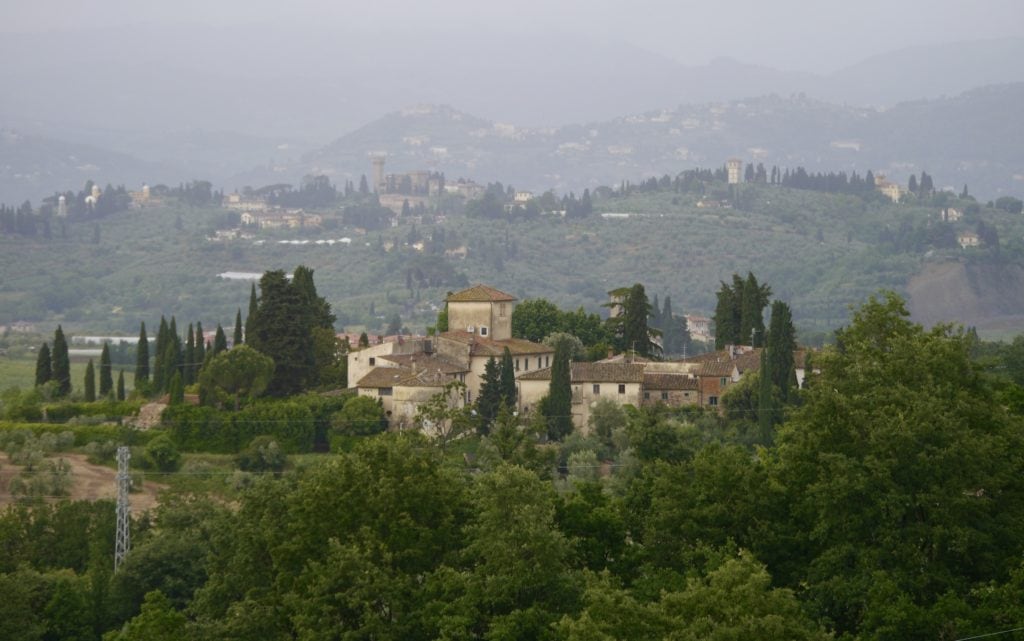
They own an olive grove in the highest point of Impruneta with 2,000 trees, from which they produce most of their olive oil. Sagittario olive oil is premium and mostly sold in the US as Corporate and special gifts, in larger quantities of minimum a case of six bottles, shipped every winter right after the pressing is done.
So the new seasonal oil reaches their customer’s homes when it is still a golden green treasure. Selling her produce to a gourmand market that appreciated the exclusivity of new oil allowed Janet and her husband to make a decent living from an agricultural life, while still preserving old traditions.
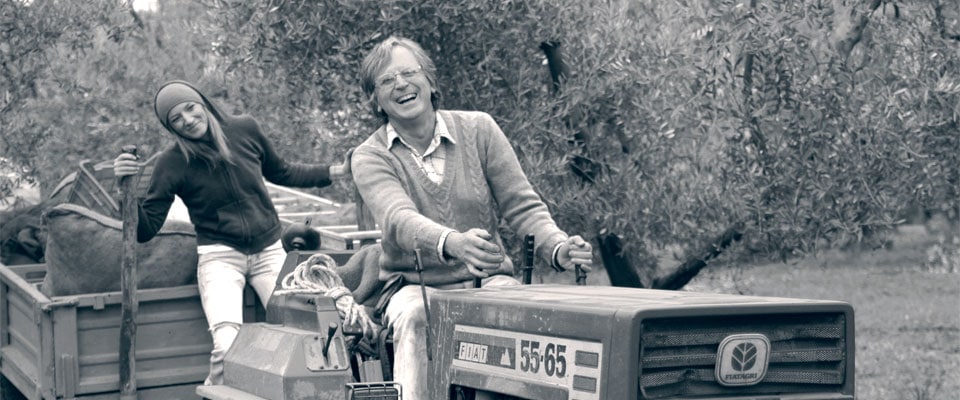
What made Janet’s business so special is that she not only managed to export the oil but also the culture around it. By selling directly to final customers straight when the new oil was produced, she managed to also export the Tuscan celebration of the new olive oil.
Every year, in the fall, when the new oil would be bottled, Janet would ship it directly so guests around the world would also enjoy the joy of new oil. Bottles of shinny liquid gold would get to customer’s houses by the holiday season, making it an ever more special celebration.
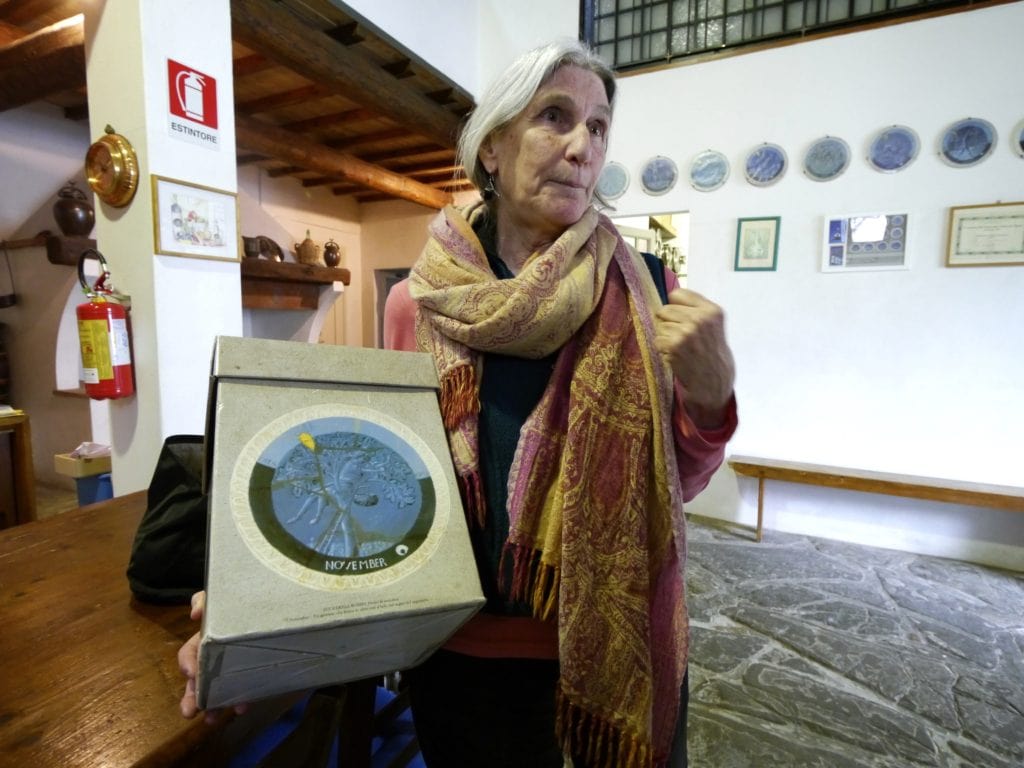
“We used to be able to say that all our customers would have eaten with us”, explains Janet, when she shows us photos of the many customers who have come to help harvest through the years. “This is not quite so true anymore because a lot of the customers heard of us through their friends, because they tried it and they realised they didn’t know that oil could taste so good”.
The Sagittario logo, taken from a majolica made in the 1400’s by Luca Della Robbia, shows how olive oil used to be enjoyed, every winter, even 600 years ago, during the month of Sagittario in the hills surrounding Florence.
Making olive oil in Tuscany
Olive oil is a good example of how bad we are in Spain at selling ourselves. I say this with a lot of love for my country, but we are not very good at promoting what we have.
Olive oil is an extreme case. Spain is the largest producer, 45% of the world’s olive oil is produced in Spain, that is 5 times more than Italy, Turkey and Greece, all three producing similar amounts. However, a lot of the Spanish oil is sold to Italy, the largest importer and the largest exporter of olive oil in the world.
Italy blends it with local cultivars and re-sells it in the form of higher end brands. As a result, Italy is the word’s largest exporter of olive oil, even if a lot of it is not locally produced. This is why most people associate Italian olive oil with high quality, even if more than half of it comes from Spanish groves.
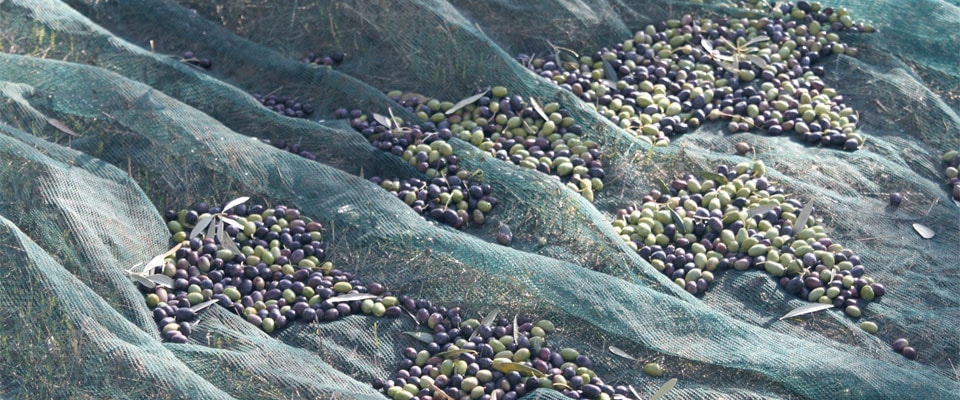
Olive oil is the juice coming from pressing olives in a specially designed machine and then separating the water and particulates from the oil through centrifuge.
In the old times, olive mills used to crush the olives with a turning heavy stone, but today this is a bit more modern. Olive yields are very low with only 15% of the weight of an olive ending up as oil, therefore, about 15kg of olives are required to produce a litre of olive oil.
Harvesting is time consuming and manually done, combing the branches with a large brush to let the olives fall on large green nets placed on the floor. After the harvest, the olives are taken to the mill where they will be processed on the same day or the next one.
The fruit is picked green, when the olives are less ripe, so they have the distinct flavour that we are used to. Janet also explained that, with climate change making the seasons warmer, they have to pick the olives earlier every year to ensure their freshness.
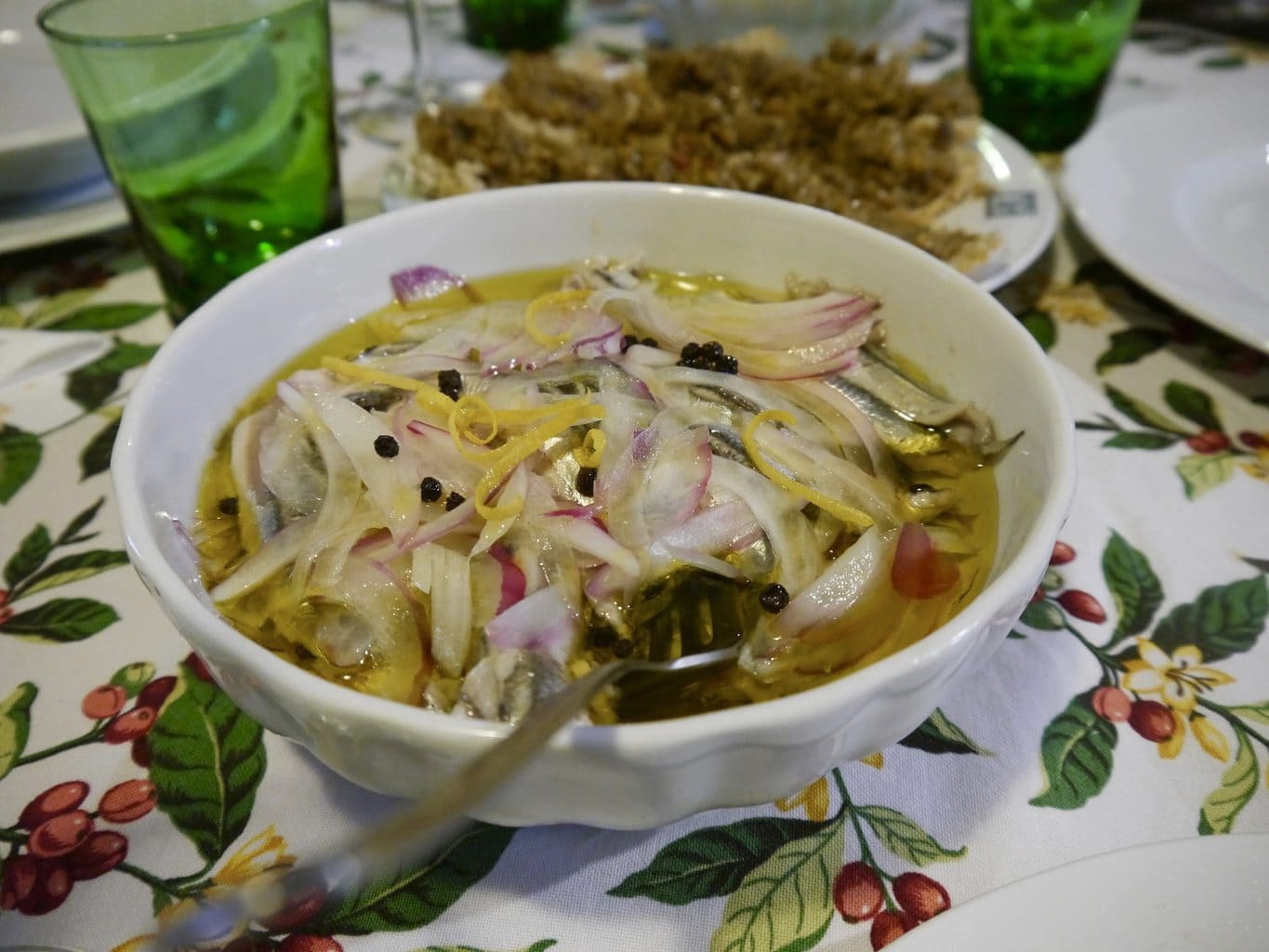
To make extra virgin olive oil the olives need to go from tree to mill straightaway. If they are left too long, like most fruits, they would ferment and their freshness would deteriorate.
Olive oil in Tuscany: learning how to use extra virgin oil
Olive oil is best enjoyed as young as possible. Aging does not help but much the opposite. As time goes by, the flavour smoothens out. Good high quality extra virgin oil is best used as a finishing oil when the dish is still hot, not so much as a cooking oil, because the strong aromas and fragrance will overpower the rest of the meal. Add it to salads, pasta, vegetables, mackerel, steamed fish, meat, bread, anything really.
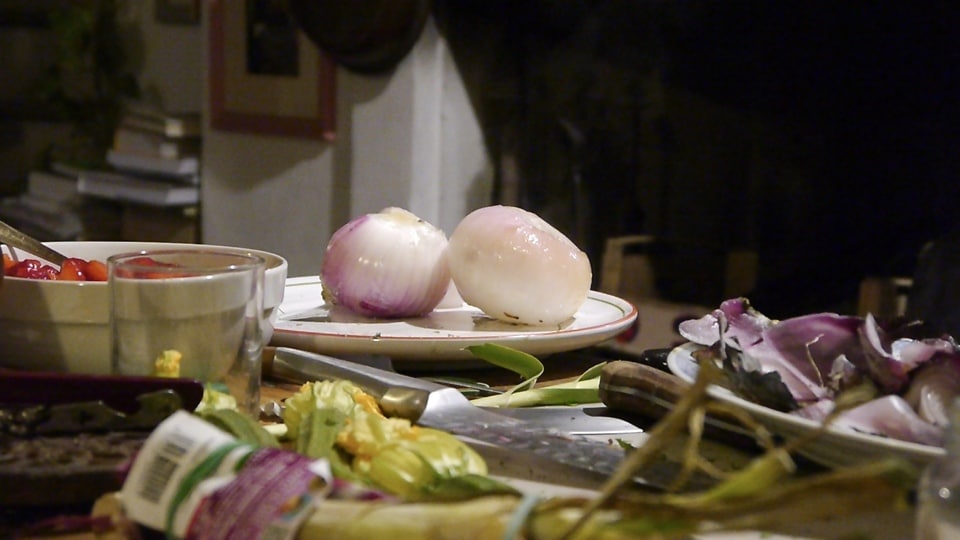
To fully understand the olive oil culture, Janet and Stefano invited us to their home for a true farm to table feast to the senses with all types of fresh and local seasonal Tuscan ingredients.
Stefano probably spent the entire day preparing and cooking for us and was constantly standing up, finishing and bringing more and more dishes to the table and we had the most incredible meal. I wrote about the dinner we had at Enoteca Pinchiorri, the 3 Michelin star restaurant in Florence, but it had nothing on Stefano’s cuisine.
Stefano took us on a tour of Tuscany through its gardens that was infinitely better than what any Michelin starred restaurant could have ever offered. The secret ingredient? Proud love for the land and its traditions.
We had raw new fava beans with pecorino cheese, straight from the vine, which Alessio peeled as we arrived. The fava beans were delicious and as they were young they were incredibly tender and paired perfectly with the pecorino cheese. This is a dish that is usually enjoyed in Tuscany at this time of the year when the fava beans are in season.
They could only be eaten this way at the source. If we bought them at the supermarket, their freshness and youth would not be guaranteed so they could possibly not taste as great.
Stefano is well known for his signature anchovies which bring people to his home from all over the world. I dislike anchovies, their salty fishy flavour staying long in my mouth, and if accompanied by raw onions I would have stayed away even more, but Stefanos’ anchovies were fresh, light and tasted like fluffy haven.
They were served in a bowl, mixed with sliced raw onions, vinegar, salt, pepper, lemon and of course, a generous pool of olive oil, and decorated with some ribbons of lemon zest. I couldn’t stop myself from having just “one more anchovy”. The table was crowded with mushroom crostini, which by then we knew was the most common Tuscan appetiser and some carpaccio made with the tastiest of meats, some shaved parmesan, artichoke sleeves and olive oil.
Stefano had even baked bread for us. It was not the usual bland and unsalted Tuscan bread which, like crostini, we had got used to and was not particularly excited about, but a sort of bread between a flatbread and a foccacia. It had the consistency of a flatbread but the moist of a foccacia and was, of course, covered in olive oil and some coarse sea salt.
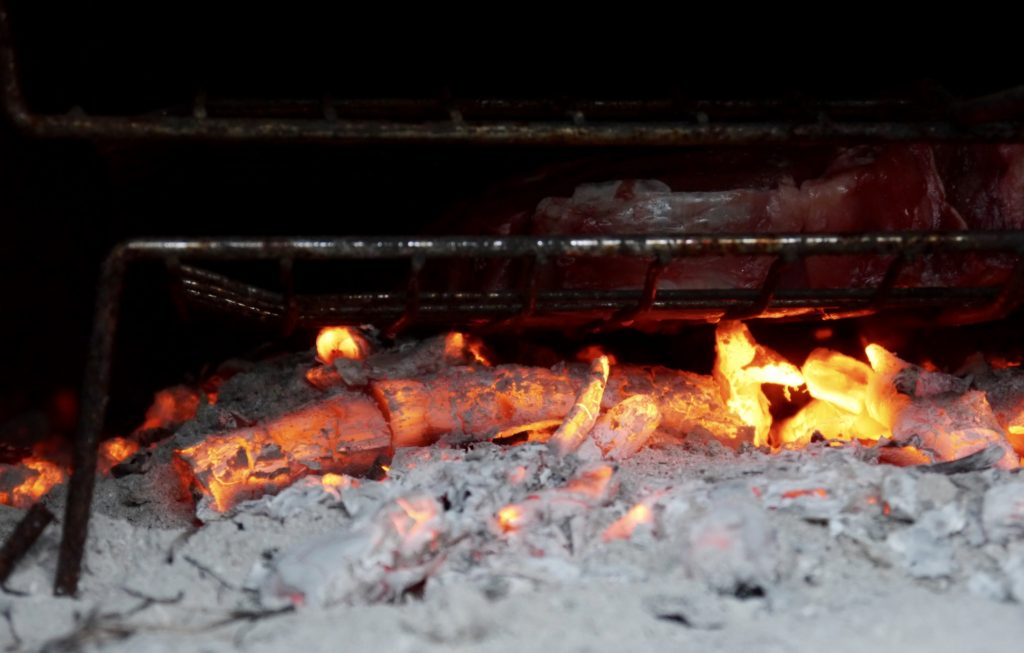
Another of Stefano’s incredibly simple but perfectly cooked dishes are a pair of red onions that he cooked, slowly, over the coal oven in the terrace. The onions were fragrant and, just like the anchovies, I would not have eaten them if it weren’t because they came after all other dishes from Stefano, who, by then, was a food hero to me.
As expected, he did not disappoint. The onion, half cooked half crunchy, covered in a shiny layer of Janet’s olive oil and balsamic vinegar, was absolutely celestial. It had all the great flavours of this staple vegetable in mediterranean cuisine without any of its pungent smell or taste. It was something we ate non-stop.
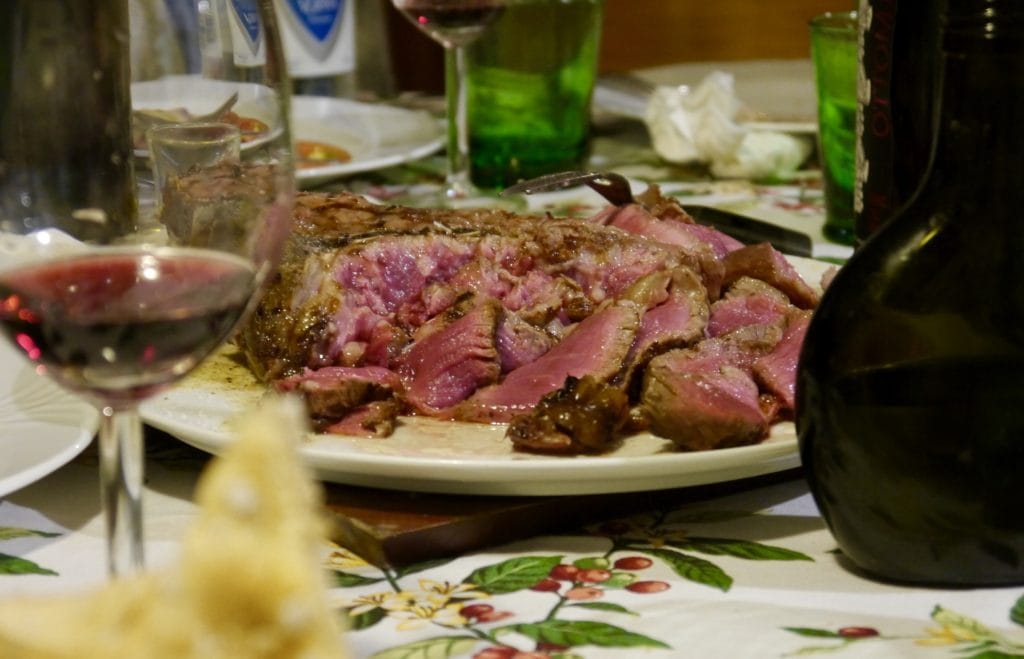
Before the star of the dinner, a huge Florentine steak, arrived, we still had to indulge in Stefano’s risotto which was creamy as it was delicate. Of course, olive oil was poured on top of the finished dish to highlight the flavours and bring out the Tuscan tradition. We could not say no, although I was zealously keeping myself for the delicious meat I had heard so much about and which had been teasing me all evening.
Stefano cooked the steak next to the coals, inside the wood brick oven, close to the heat source but not on top of it, and for a very short period of time for a piece of t-bone steak that must have been at least a kilo. When it came out, he drizzled more olive oil on it, on both sides, sprinkled salt and pepper and sliced it, encouraging us to taste at least once slice from each side of the bone, as they tasted differently, and drizzling some more oil.
I don’t think there could have been a better ending to our trip, or indeed a better introduction to Florentine steak as the one Stefano shared with us. I had never had the famous regional steak before and I shall never order it again in any restaurant for it will never taste as rich, as deep or as unique as Stefano’s.
- Check if you need a visa, get help processing it at iVisa.
- Never ever leave without travel insurance. Get affordable coverage from World Nomads or long term insurance from Safety Wing.
- I find all of my flights on KAYAK. Check their Deals section too.
- Search for all your transportation between destinations on the trusted travel booking platform Bookaway.
- I book all my day trips and tours via GetYourGuide, they are the best and their tours are refundable up to 24h in advance.
- Get USD35 off your first booking with Airbnb.
- Compare hotels EVERYWHERE at HotelsCombined and book with Booking.com.
- Compare car rental prices at Rentalcars.com
